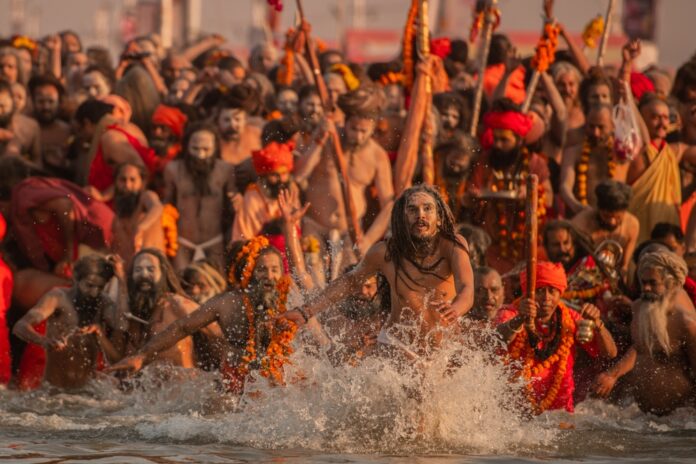The Kumbh Mela stands as a testament to India’s rich spiritual heritage, drawing millions of devotees from across the globe. This grand festival is celebrated at the confluence of sacred rivers- Ganga, Yamuna and Saraswati which embodies the essence of faith, unity and cultural diversity.
Historical Origins of Kumbh Mela
The roots of Kumbh Mela trace back to ancient Hindu mythology. According to legend, during a cosmic battle between gods and demons over the elixir of immortality( अमृत) and drops of this sacred nectar fell upon four earthly locations: Prayagraj, Haridwar, Ujjain, and Nashik. These sites have since become the focal points of this Mela, where the rivers are believed to transform into vessels of divine nectar at specific astrological moments, offering pilgrims an opportunity for spiritual purification.
Significance and Rituals
Central to Kumbh Mela is the act of taking a ritualistic dip in sacred rivers. Devotees believe that bathing during the auspicious times of festival absolves them of sins and paves way to liberation from cycle of birth and death. The festival is also a hub for spiritual discourse, where saints, sages, and scholars engage in discussions, imparting wisdom and guidance to masses.

Locations and Timing
The Kumbh Mela rotates among four cities:
- Prayagraj (Allahabad): At the confluence of the Ganga, Yamuna and the mythical Saraswati rivers.
- Haridwar: Along the banks of the Ganga in Uttarakhand.
- Ujjain: On the shores of Kshipra river in Madhya Pradesh.
- Nashik: Beside the Godavari river in Maharashtra.
The festival occurs four times every twelve years, with each location hosting the event based on specific astrological alignments. The Maha Kumbh Mela, a particularly significant gathering, is held every 144 years, attracting an even larger congregation of pilgrims.
The 2025 Maha Kumbh Mela in Prayagraj
The 2025 Maha Kumbh Mela in Prayagraj has been a monumental event, witnessing an unprecedented influx of devotees. Over 500 million individuals have participated, taking holy dip in the sacred confluence over a span of four weeks. This gathering has surpassed previous records, solidifying the festival’s status as world’s largest peaceful assembly.
The festival has also seen a resurgence of ancient Hindu sects, with over 10,000 new sadhus (holy men) initiated during the event. This revival is attributed to the support from current government, emphasizing cultural and spiritual significance of this Mela in contemporary India.
Other related articles:
The Vijayanagara Empire : History of Medieval India



